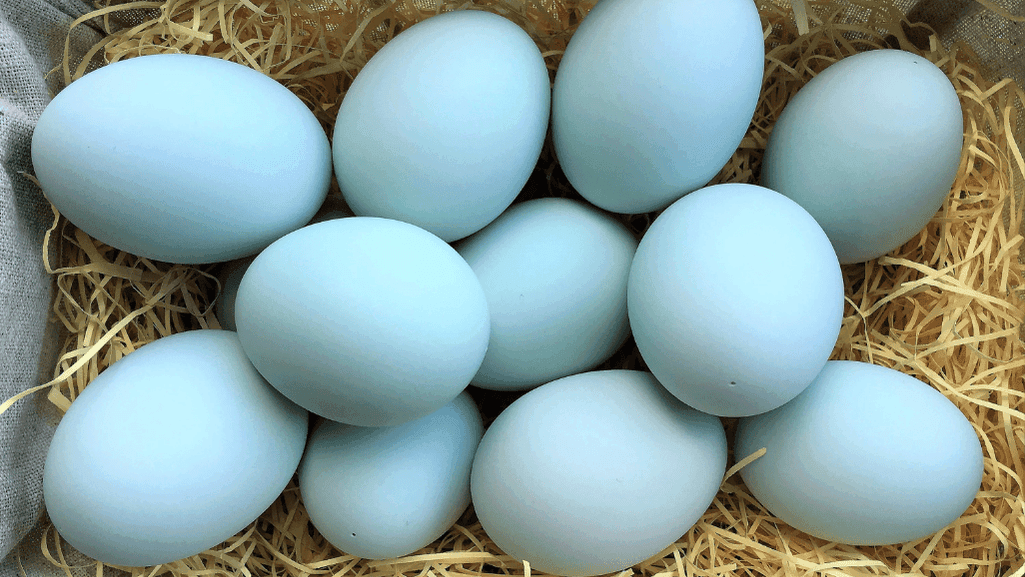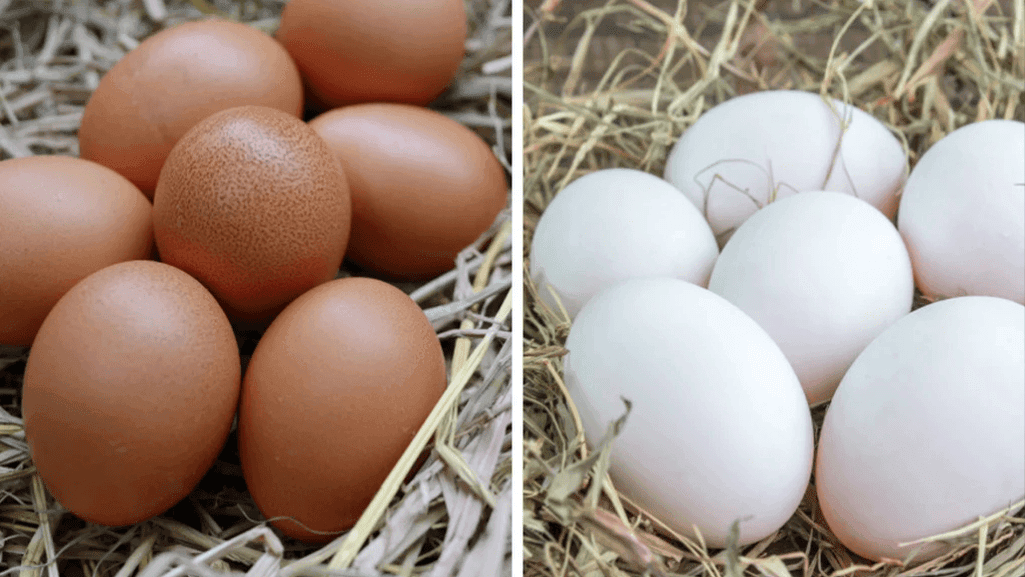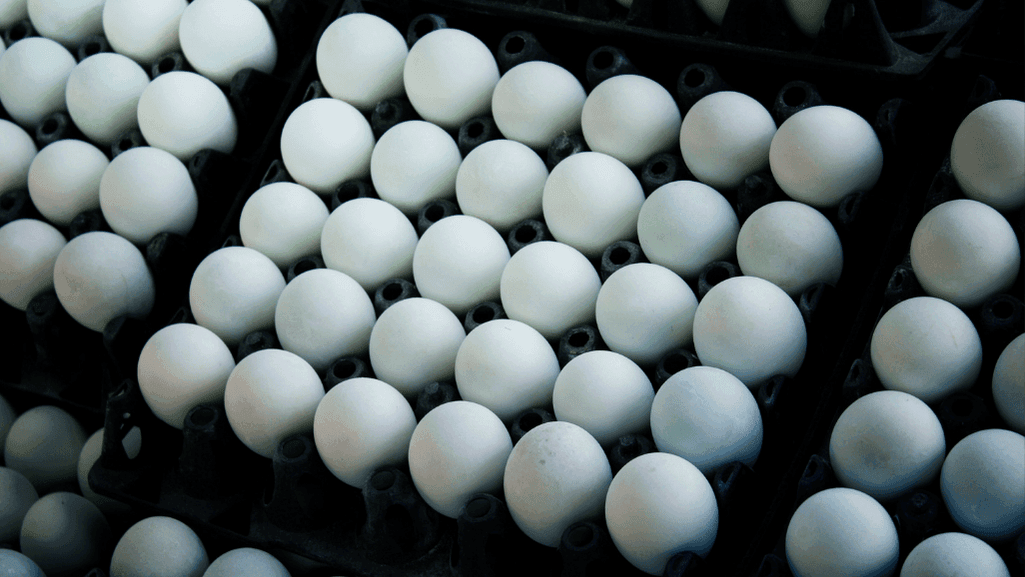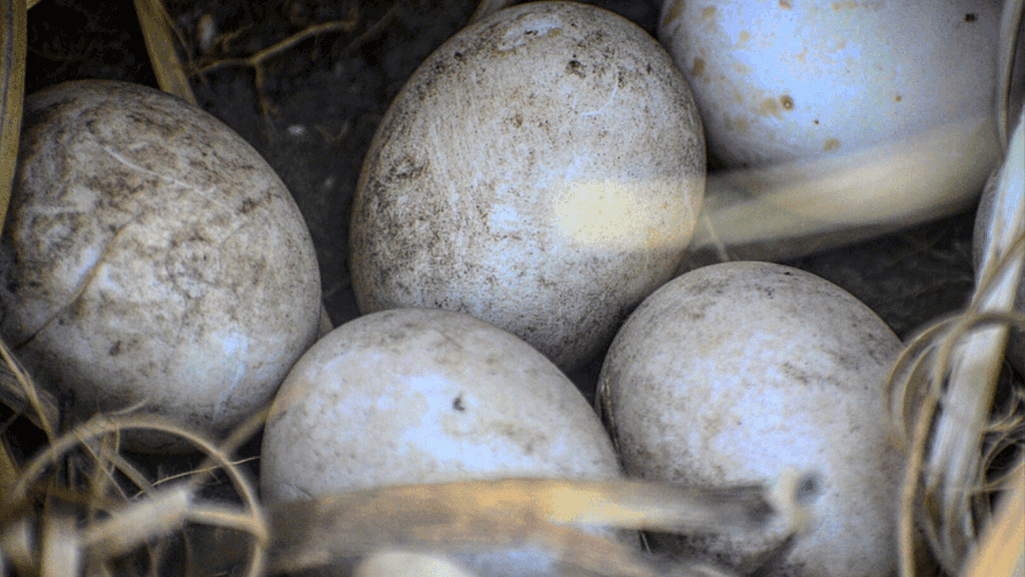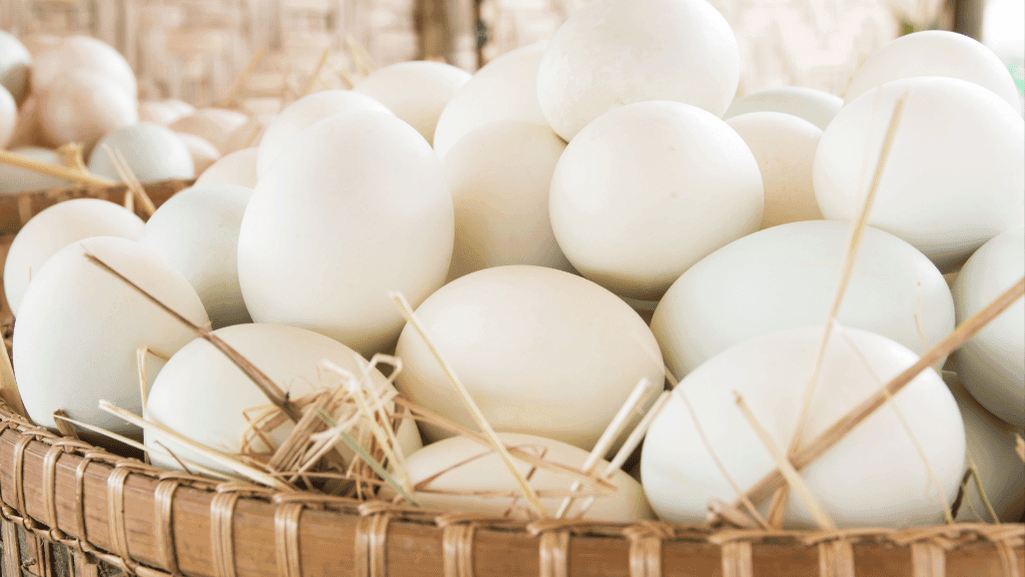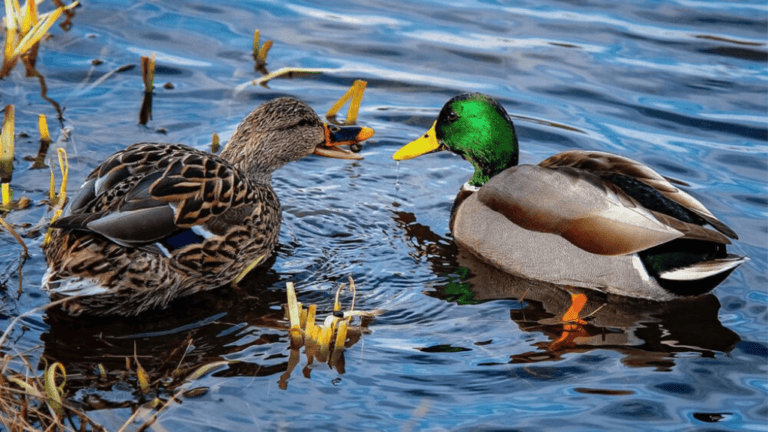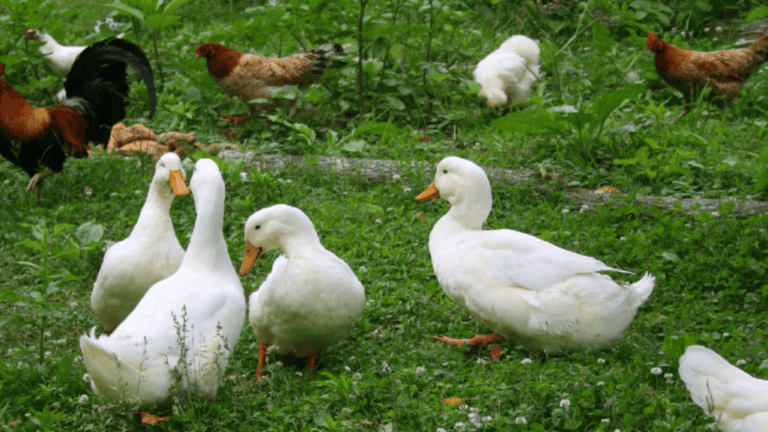What colour is a duck egg? Duck is come in a wide range of natural colors. You’ll find everything from blue-green to rich cream shades. Metzer Farms is proud to offer these fresh eggs in all their beautiful colors.
Mallard ducks in the wild have blue-green eggs. This color helps them hide from predators. Domestic Mallards mostly lay blue-green eggs too, but some may have white shells.
But there’s more to duck egg colors than just blue-green. Breeds like Khaki Campbell and Welsh Harlequin have creamy white to light green eggs. Others, like Cayuga and Ancona, have eggs in gray to black. This variety makes duck eggs even more special.
Key Takeaways
- Duck eggs come in a variety of natural shell colors, from blue-green to cream shades.
- Wild mallards lay eggs with blue-green shells for camouflage, while domestic Mallards mostly produce blue-green eggs with some white variations.
- Different duck breeds produce eggs with unique shades, such as creamy white, light green, gray, and black.
- The diversity in duck egg tints and tones adds to their allure and appeal.
- Certain duck breeds, like Khaki Campbells and Welsh Harlequins, are known for their specific egg shell colors.
Understanding Duck Egg Color Variations
Duck eggs come in a wide range of colors, from classic white to blue, green, and black. These colors add a unique touch to any kitchen. They also spark interesting conversations. Let’s explore the world of duck egg colors and what makes them so special.
The Common Colors of Duck Eggs
Chicken eggs are usually white or brown, but duck eggs offer more colors. The most common colors are:
- White
- Pale blue to periwinkle
- Light green to sage
- Charcoal gray to black (less common)
The color of a duck egg can change based on the duck’s breed and genetics. For example, Cayuga ducks lay black or charcoal gray eggs. This adds an exotic touch to any egg collection.
Factors Influencing Egg Shell Color
Several things affect a duck’s eggshell color, including:
- Genetics: Ducks have two genes for egg color. These can be white (recessive), blue/green (dominant), or a mix.
- Breed: Some breeds lay specific colors. For instance, Pekin, Saxony, and Silver Appleyard ducks lay white eggs. Ancona, Magpie, Mallard, and Runner ducks lay blue/green eggs.
- Selective Breeding: Breeding practices have shaped duck egg colors. Breeding white-shell hens with white-hatched drakes increases white egg-laying in females.
“The color of the egg laid by a duck may not necessarily match the color of the egg it hatched from.”
Once a duck starts laying a certain color egg, it will keep laying that color. The shade might change over time, but the color stays the same.
Comparison of Duck Egg Colors to Chicken Eggs
Duck eggs are bigger than chicken eggs, almost twice as large. Their shells can be off-white, pale green, or blue. Chicken eggs, on the other hand, come in many colors like white, brown, green, pink, blue, and cream.
Duck eggs have thicker, tougher shells than chicken eggs. This makes them last longer because they lose less moisture. Duck egg yolks are bigger and more orange than chicken egg yolks, which are bright yellow.
Visual Differences
When you crack open a duck egg, you’ll see a bigger yolk compared to the whites. Duck egg whites are almost clear, while chicken egg whites are more white. This makes duck eggs look different from chicken eggs.
Nutritional Value Perception
Duck and chicken eggs have similar nutrients, but with some differences. Duck eggs have more calories, about 130 per egg, compared to chicken eggs’ 71. They also have more protein, with 9 grams per duck egg and 6 grams per chicken egg.
Duck eggs have more omega-3 fatty acids, with 71.4 mg per egg. Chicken eggs have about 37 mg. But, duck eggs have a lot more cholesterol, around 619 mg per egg, compared to chicken eggs’ 186 mg. It’s good to eat duck eggs in moderation because of their high fat and cholesterol.
Duck eggs taste slightly stronger and creamier than chicken eggs. This makes them great for pastries, custards, and omelets. Duck eggs offer a unique taste and are a nutritious choice for those looking to try something different.
The Biological Basis for Shell Colors
The colors of duck egg shells, like duck egg blue and duck egg green, are more than pretty. They come from the duck’s genes and breed.
A study in BMC Genomics on 19 January 2019 looked at shell gland changes. It used RNA-sequencing on the Illumina HiSeq 2500. The study found 899 genes changed in blue-green-shelled ducks (HQR) and white-shelled ducks (BBR). It also found 373 DEGs between HQR and white-shelled ducks from Putian black ducks (HBR).
Genetics Behind Egg Color
The study found big differences in genes like Haem oxygenase (HMOX1) and delta-aminolevulinic acid synthase 1 (ALAS1). It showed that blue-green eggshell color comes from biliverdin. Brown or pink colors come from protoporphyrin IX.
The genetics behind eggshell color in ducks is a complex interplay of various genes and pathways, each contributing to the final hue we observe.
The Role of Breed in Determining Color
Breed is key in eggshell color. Ancona, Buff, Rouen, and Runner ducks lay tinted eggs. Appleyard, Campbell, Pekin, Swedish, and Welsh Harlequin ducks lay white eggs. But, white eggs aren’t always guaranteed.
Learning about eggshell color in ducks is fascinating. It shows the amazing diversity in nature. We can now understand the genetic and breed-specific factors behind duck egg blue and duck egg green colors.
Regional Differences in Duck Egg Colors
Duck egg colors vary across regions, thanks to local duck breed preferences. These choices shape the duck egg colors found in markets and dishes.
Popular Breeds by Region
Mallard ducks are loved for their blue-green eggs in many places. These eggs make dishes special and are in high demand. Cayuga ducks, known for their black eggs, lay them early in the season.
The Jinding duck, from China, is famous for its green eggs. This is due to a special gene. Indian Runner ducks are known for laying lots of eggs, up to 300 a year. Khaki Campbell ducks also lay a lot, around 300 eggs a year.
Muscovy ducks, with their unique look and meat, lay fewer eggs, about 100 a year.
Cultural Significance of Egg Colors
In some cultures, duck egg colors mean a lot. For example, Cayuga ducks’ black eggs are seen as a delicacy or sign of wealth. Mallard ducks’ blue-green eggs might symbolize fertility or new beginnings.
“The colors of duck eggs are not just a matter of aesthetics; they are a reflection of the rich diversity in duck breeds and the cultural significance they hold in different regions.”
Knowing about regional egg colors and their cultural value helps us appreciate the variety. It also guides us in choosing the right duck eggs for our needs.
How to Identify Duck Egg Colors
Identifying duck egg colors involves a few key factors. The most obvious is the duck egg tone, which can range from pure white to various shades of blue, green, gray, and even black. Some breeds, like Cayugas, may lay eggs with a dark film that can be rubbed or washed off to show the true color.
To accurately identify duck egg colors, comparing eggs from different breeds side by side is helpful. This lets you see subtle differences in hue and intensity. It helps you understand the unique characteristics of each breed’s eggs.
Observing Color Patterns
It’s also important to observe any color patterns or variations on the shell. Some breeds may produce eggs with speckles, spots, or streaks of different colors. These patterns can help identify the breed of duck that laid a particular egg.
Tips for Accurate Identification
To ensure accurate identification of duck egg colors, consider these tips:
- Collect eggs regularly to observe any changes in color throughout the laying season
- Keep a record of the colors and patterns associated with each breed in your flock
- Consult a duck egg color chart or guide to compare your eggs with established standards
- Be aware of any environmental factors that may temporarily affect egg color, such as diet or stress
By carefully observing and documenting the colors and patterns of your duck eggs, you’ll develop a keen eye. You’ll be able to identify the unique characteristics of each breed. This will give you a deeper appreciation for the diversity of these beautiful eggs.
Conclusion: The Diversity of Duck Egg Colors
This article has taken us into the world of duck egg colors. We’ve seen how genetics and breed influence their natural colors. Duck eggs come in many colors, from white and cream to green and black. This variety shows the amazing complexity of nature’s design.
c
Knowing about duck egg colors is useful for duck owners and egg lovers. It helps when choosing ducks for egg-laying or buying eggs. Recent studies have uncovered the genetic reasons behind egg color. They found genes and miRNAs that explain why some eggs are green and others are white.
Final Thoughts on Duck Egg
VarietiesDuck eggs may look different, but they taste the same. They are bigger than chicken eggs and full of nutrients. With 185 kcal, 13 grams of protein, and 13 grams of fat per 100 grams, they’re great for any diet.
Duck eggs are also loved for baking. Their rich texture and big yolk make baked goods moist and tender. As we wrap up our look at duck egg colors, let’s enjoy their beauty and diversity. Whether you own ducks, love eggs, or just find them interesting, knowing about their colors makes us appreciate the amazing world of birds more.


